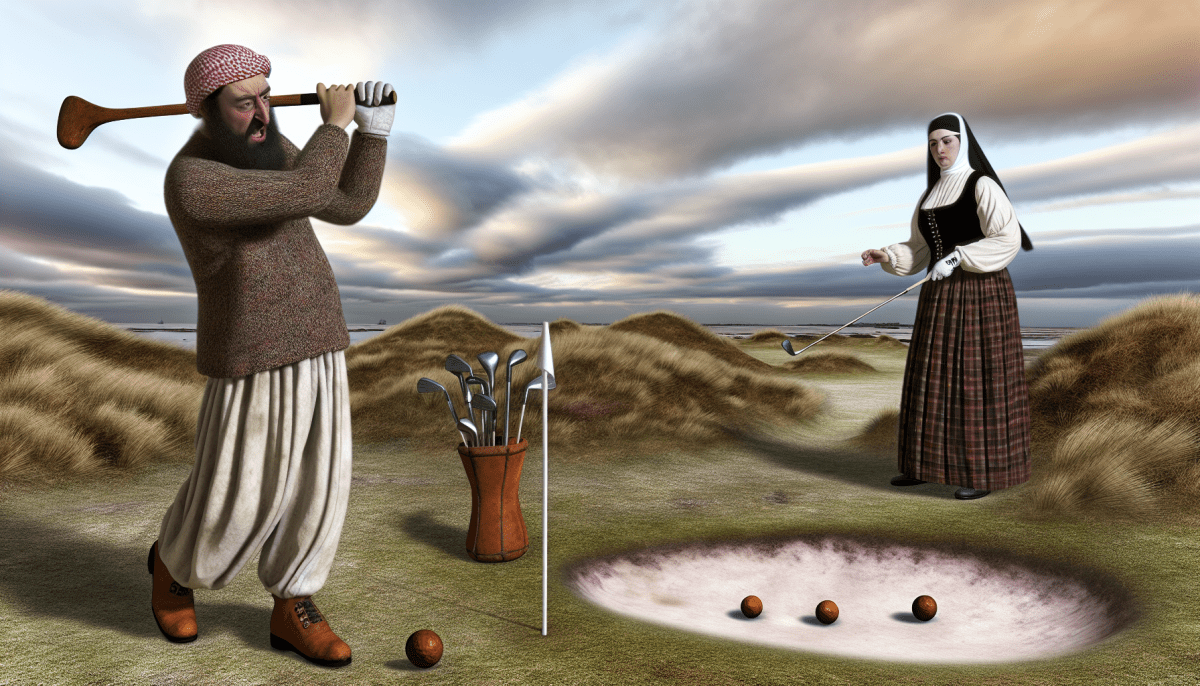The game of golf has a rich history that takes us back to the early 15th century. Originating in Scotland, this sport was played with sticks and a round ball on the rugged terrain of the country. Isn’t it fascinating how a game so loved today started in such a basic way? The Scottish highlanders enjoyed hitting a pebble around a field, using whatever they could find to create makeshift clubs.
While the exact roots of golf are debated, it’s widely accepted that a similar game was played by the Dutch in the 13th century called “colf.” Players would hit a wooden ball with a stick towards a target, highlighting that the concept of striking a ball and aiming for some kind of goal has long been a part of human enjoyment.
In 1457, the Scottish Parliament even banned golf, declaring that it distracted young men from practicing archery, which was essential for national defense. Can you believe that golf was seen as such a nuisance? But, despite the bans, the sport's popularity grew, with crowds often flocking to the coast to play.
Fast forward to the 16th century, golf made its way to England and then beyond. The game began to find its footing and gain popularity among the nobility. The establishment of the Old Course at St Andrews in 1552 solidified golf as a respected sport. The original rules were laid down to encourage fair play, showing that even back then, sportsmanship was a key part of the game.
The Evolution of Golf Equipment
Golf equipment has come a long way since the game first began. Back in the day, players used handmade wooden clubs and simple leather balls. These early clubs were often tailored to the player’s needs, with shapes and sizes varying widely. Can you imagine teeing off with a stick carved from a tree? It was all about skill and a little bit of luck!
As the game grew in popularity, so did the technology behind the equipment. By the 19th century, the modern golf club started to emerge, with iron clubs and gutta-percha balls taking center stage. The gutty, made from rubber sap, was a game-changer. It allowed for more consistent play compared to the feather-filled balls used before. This shift meant golfers could finally rely on their equipment to help improve their game.
Fast forward to the 20th century, and technology really kicked into high gear. Manufacturers began experimenting with different materials, leading to the creation of metal woods and the iconic driver we know today. Golfers could now hit the ball farther and straighter, revolutionizing the way the game was played. The introduction of high-tech hybrids and advanced putters made the sport even more accessible to players of all skill levels.
Today, golf equipment is not just functional but highly specialized. From adjustable drivers to balls designed for maximum spin, there's a piece of gear for everyone. The focus is on enhancing performance and helping golfers improve their game, whether they’re just starting or are seasoned pros. With each innovation, the game of golf becomes more exciting, allowing players to enjoy their time on the course even more!
Major Tournaments That Shaped Golf
Golf's history is dotted with tournaments that have had a major impact on the game. One of the earliest and most important is The Open Championship, which started back in 1860. Held in Scotland, it was originally played at Prestwick Golf Club. This tournament is not just the oldest in golf; it set the stage for the international growth of the sport.
The Masters Tournament, first held in 1934 in Augusta, Georgia, has transformed professional golf with its iconic green jacket and rich traditions. It's known for its stunning azaleas and the emotional joy of winning, inspiring players worldwide to compete at the highest level.
Let's not forget the Ryder Cup, kicking off in 1927, which pits the best golfers from the USA against their European counterparts. This team event brings a unique excitement to golf, creating a spirited rivalry and uniting fans every two years. Its atmosphere is electric, making it a must-watch for any golf lover.
Finally, the PGA Championship, established in 1916, has become one of the four major championships in golf. With a reputation for competitiveness and a challenging course, it attracts the best players and showcases top-tier talent every year. When the PGA rolls around, you know the stakes are high!
Golf's Global Impact Over Time
Golf has been more than just a sport; it has woven itself into the cultural and social fabric of various countries over the centuries. From Scotland's lush green links, where it all began in the 15th century, to the sprawling golf courses in the sunny landscapes of Florida, the game has shaped communities and economies alike.
In its early days, golf was primarily played by the aristocracy in the UK. This meant that it was somewhat exclusive, but as time went on, the game opened up to a broader audience. Countries like the United States embraced golf in the late 19th century, leading to the establishment of iconic events, like the U.S. Open. The sport’s growing popularity saw the rise of public courses, making it accessible to everyday folks.
As golf spread globally, it began to reflect the diverse cultures and values of each region. For instance, in places like Japan and South Korea, golf became a significant part of professional business culture. Often, business deals are struck on the greens, blending leisure and networking seamlessly.
Today, golf is not just a game; it’s a massive industry that generates billions of dollars each year. Golf tourism, celebrity endorsements, and international tournaments have transformed the sport into a global phenomenon. Whether it’s the Masters in Augusta or The Open Championship, these events draw fans and inspire young players, illustrating that golf truly has crossed all borders.



